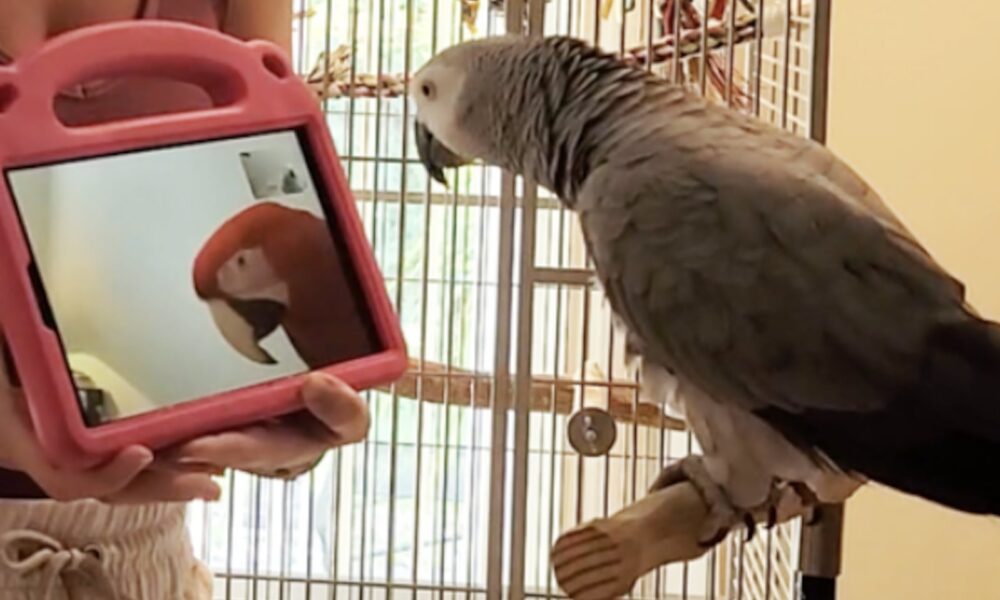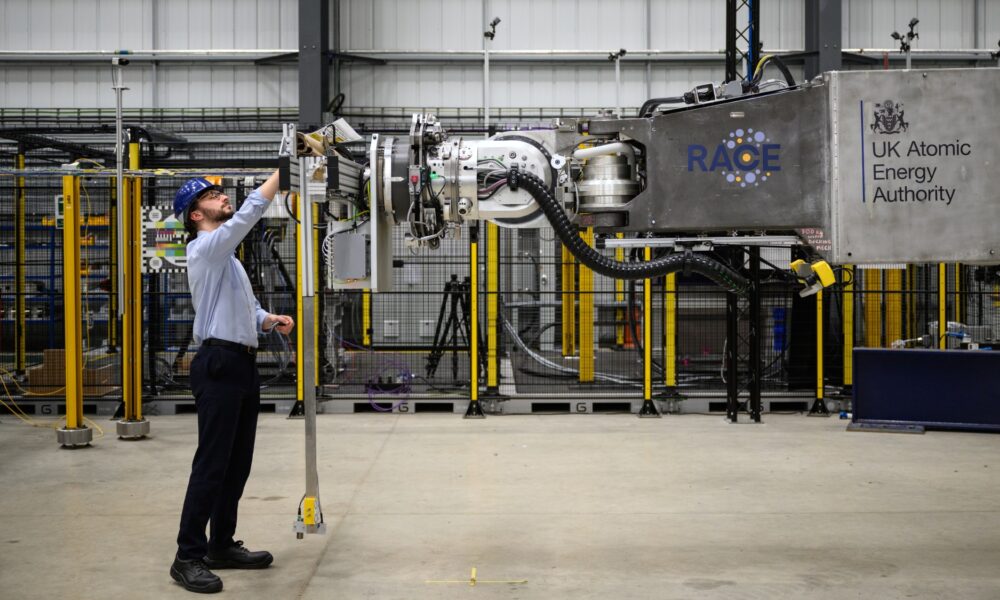A groundbreaking initiative led by researcher Rébecca Kleinberger is transforming how animals interact with technology. This innovative approach began with a hyacinth macaw named Sampson, who discovered a unique device that allowed him to control music, sparking a series of experiments designed to enhance animal well-being and engagement.
Kleinberger, now an assistant professor at Northeastern University, developed the interactive device, dubbed the “Joy Branch,” in response to a request from Sampson’s caretaker at the San Diego Zoo. The goal was to create a tool that would enable Sampson to listen to music independently. What emerged was a fascinating demonstration of agency; Sampson not only controlled the music but also attracted visitors to his exhibit, enhancing his interactions with humans. According to Kleinberger, “It’s really his own agency… that led to him using his branch a lot and using it not just to control music, but to also attract visitors.”
Kleinberger’s research journey began while she was at the Massachusetts Institute of Technology (MIT), where she obtained her master’s and doctoral degrees. Her current research, conducted through the Interspecies Technology for Enrichment and Research on Animal Connection and Togetherness (INTERACT) Animal Lab, explores a variety of species across different environments, including pets, zoo animals, and wildlife.
The question of whether animals understand their interactions with technology remains complex. Kleinberger notes, “We can never really prove that an animal understands what they are doing… But we can look into the engagement they have with it, how often they use it.” This ongoing inquiry involves collaboration with experts in animal behavior to analyze engagement data and refine technology applications.
Kleinberger recently taught a course on designing technology for animals, engaging 16 students from Northeastern University, MIT, and Harvard University. Some students remained over the summer to help implement and test new technologies at Zoo New England, which includes Franklin Park Zoo in Boston and Stone Zoo in Stoneham.
In addition, Kleinberger is collaborating with Tandem Vet Care to investigate ways to reduce stress in cats during veterinary appointments. Although she could not disclose specific details about these projects, she indicated that findings would be published in the coming months.
One of the lab’s notable studies, conducted in partnership with the University of Glasgow, examined how 20 pet parrots interacted with touchscreen games. The three-month study revealed insights into the birds’ tactile preferences and how these games could serve as enrichment tools. In another project, the lab explored a parrot-to-parrot video calling system, finding that most participating birds engaged with the technology, resulting in 147 bird-triggered calls. This interaction allowed caretakers to observe behavioral improvements, including increased flying and foraging skills.
What sets Kleinberger’s INTERACT Animal Lab apart from others is its fundamental philosophy: instead of assessing animal intelligence, the lab focuses on enhancing animal welfare through technology. Kleinberger emphasizes, “We’re not there to test them. We’re there to try to see how we can improve their life.”
Ethical considerations are paramount in Kleinberger’s work. She collaborates exclusively with accredited zoos and organizations that prioritize high standards of animal welfare. She highlights the importance of educating the public and working closely with zookeepers to better meet the needs of animals.
Kleinberger remarked on the challenge of ensuring that technological solutions do not merely serve as temporary fixes for deeper issues in animal care. “Even when you work with the farming industry — how do you make sure you’re not just putting a band-aid on?” she asked, underscoring the need for meaningful change in how we approach animal welfare.
She believes that humans have a responsibility to enrich the lives of animals, particularly given our role in damaging their natural habitats. “There is so much potential because so much of the technology is there,” Kleinberger explained. “The tools are not in the hands of the right people.” She advocates for a framework to rigorously evaluate technological impacts on animals, suggesting that much existing pet technology is designed with human convenience in mind rather than animal well-being.
Reflecting on past projects, Kleinberger contrasts her approach with previous initiatives like those involving Koko the gorilla and sign language. “I see it as really trying to have the animal go most of the way toward our human languages, and I’m trying to do the inverse,” she stated, aiming to create technology that empowers animals rather than asking them to adapt to human standards.
As the INTERACT Animal Lab continues to pioneer innovative solutions for animal enrichment, its work promises to reshape the relationship between technology and the animal world, paving the way for a future where animals can thrive in environments designed to meet their needs.







